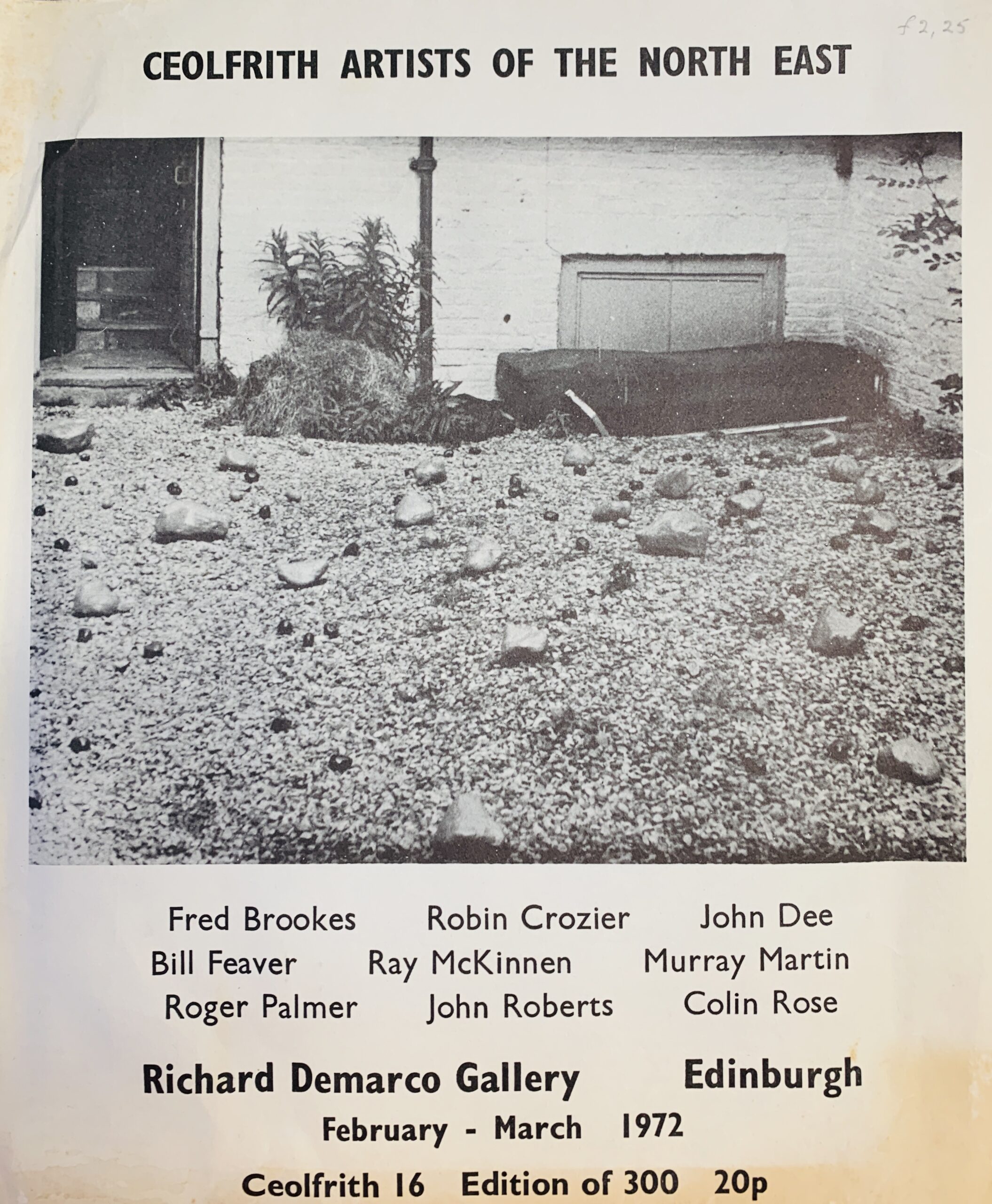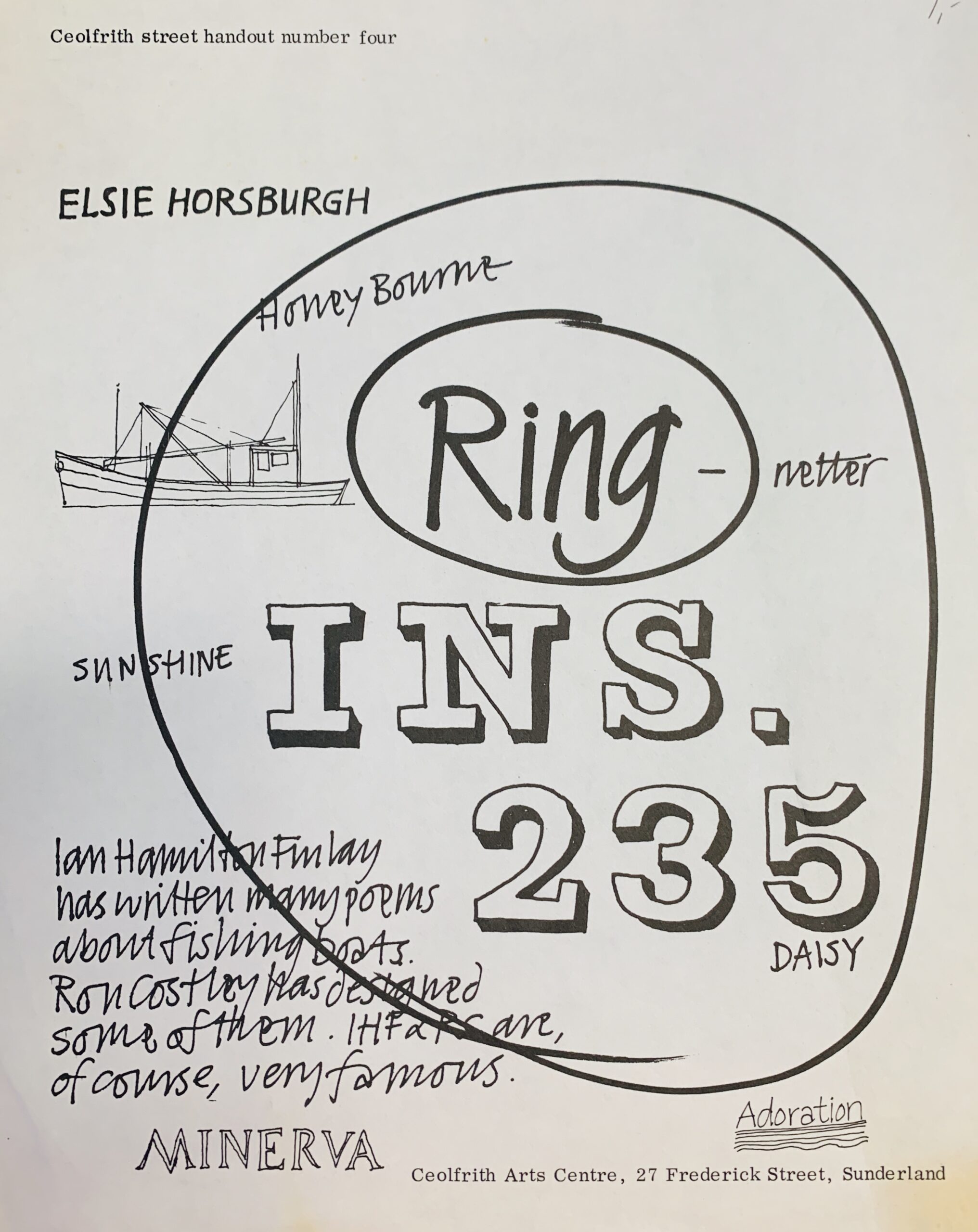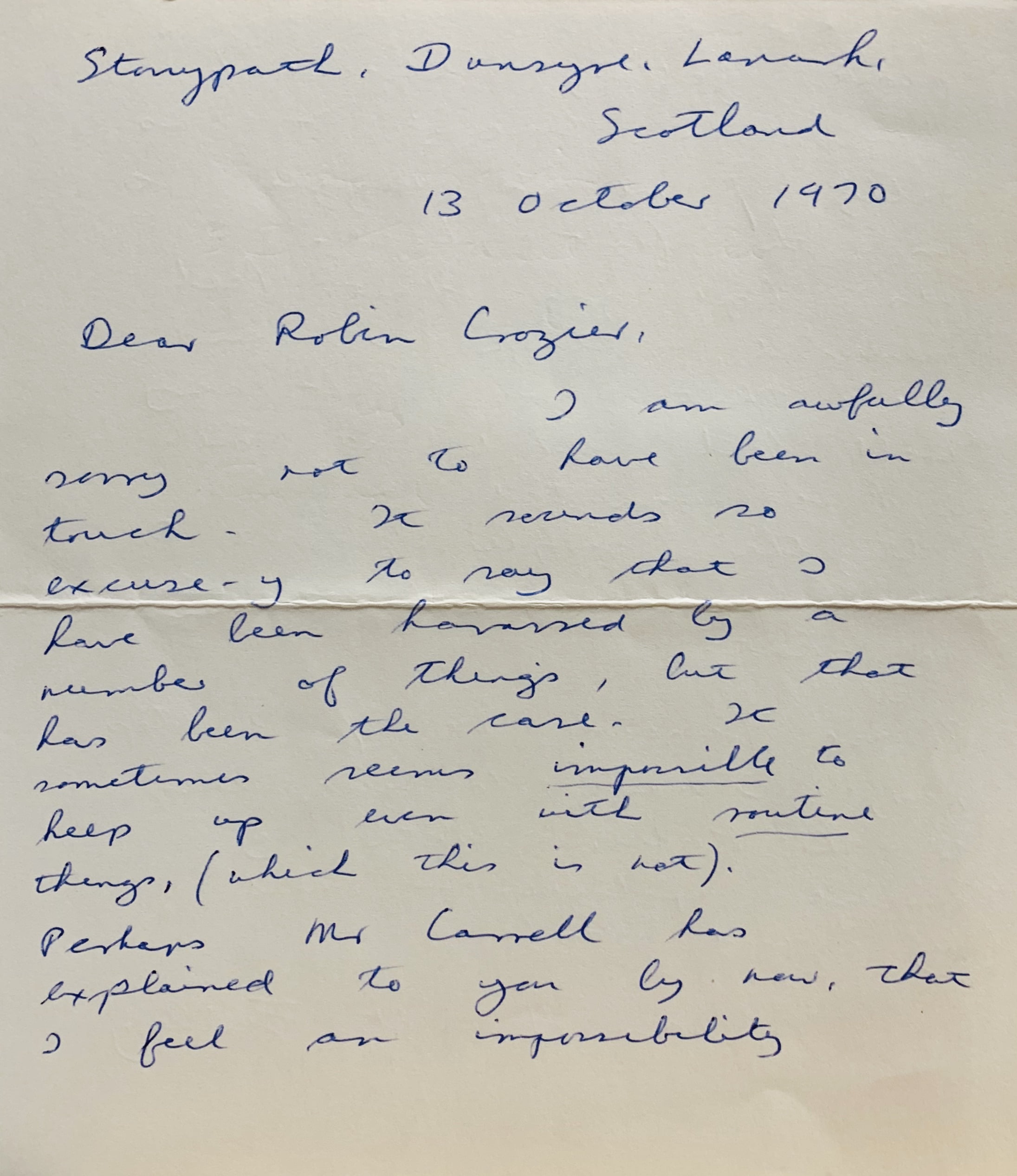Posted at 15:59h
in
Letters + Documents
Little Sparta: Finlay, 17 September 1970.
21 x 18cm, 2pp carbon copy typed letter on white paper which is hand signed at the end in ink. A letter to the British Fluxus artist Crozier discussing the proposed EXERCISE X book which the two artists were collaborating on. The letter discusses in detail the print and typography options for the book, Finlay arguing for subtle, nuance where possible where the letter X in the book changes. Finlay says "I must stress that I don't consider this booklet profound. Everyone knows that nuance exists. On the other hand, I get pleasure from showing how much one can change a thing while scarcely from the spot , as it were. If we make dramatic (moving) differences between the visual representations of the Xs, we will undermine the whole point. If, for instance, "Two" and "Duet" are just noticeably not the same 2 crossing lines, we can rely on the words to complete the distinction, without taking it further than that.
Likewise, "Duck-pond" needn't really try to depict the wakes left by 2 swimming ducks, but just by the merest alteration in the lines, allows the words to modify the image. Though obviously, if we had a blue rectangle on white one, there, and could have the lines white instead of black that would be pleasing."
JOINT:
A further two pages - both 21 x 18cm, 1pp carbon copy typed letter on white paper (recto only and stapled top left) with hand corrections by Finlay explaining the EXERCISE X book in greater detail. An important letter showing the degree to which Finlay's work method relied upon small considerations and great attention to detail. The book was planned to have a free style drawn X on each right hand page along with two hand drawn words of text. "The text is , in every case, a verbal modification of an X, and the rendering of then X's by the artist/calligrapher should echo this modification to some degree." The book in essence is how the smallest of changes can alter the meaning of something as much as possible.
Finlay lists the various texts which will alter the X's - The Windmill, The Stitch, The Net, The Kiss, The Cancellation, The Duck-Pond, The Ten, The Two, The Duet. All being able to be represented by an X - some more obviously than others (for instance, the Duck Pond is two crossing wakes from swimming ducks).
Finlay mentions the use of colour but accepts that is down to expense but he would ideally like a brown X at The Net and a red one at The Cancellation and a blue one at the Duck-Pond etc. "The actual details of presentation will have to be decided in terms of the cost." "Probably a very small format would be nicest."
JOINT:
A hand addressed mailed envelope to Crozier in Finlay's hand. Carefully opened.
...



